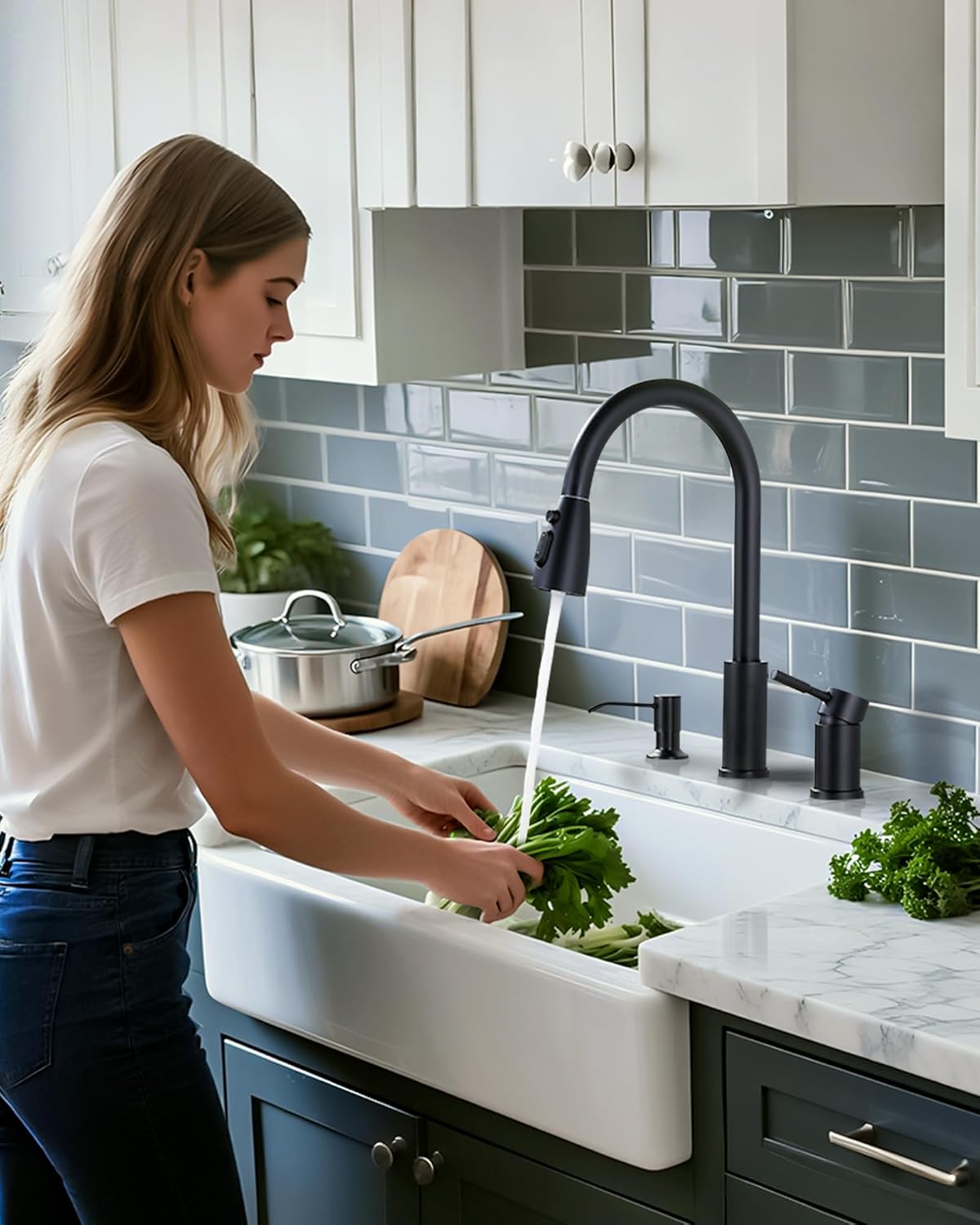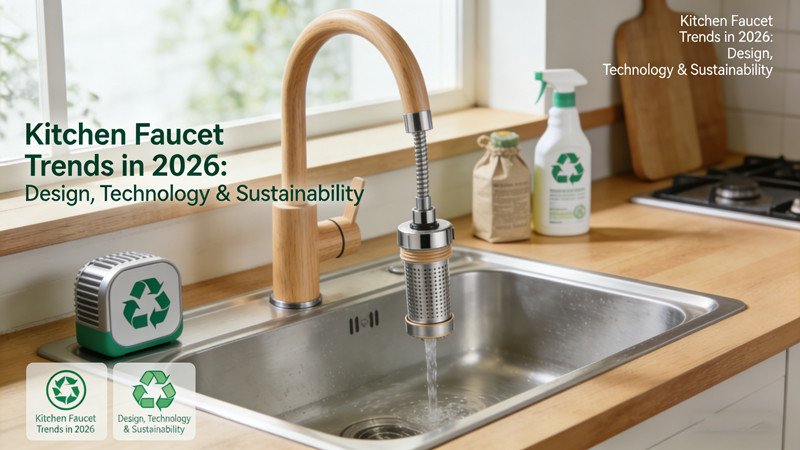When shopping for a new faucet, the material it’s made from matters just as much as its design or finish. Among all faucet materials, brass stands out for its strength, corrosion resistance, and timeless appeal. Real brass faucets are known to last for decades, making them a top choice for both residential and commercial applications. However, with so many imitation finishes and low-cost alternatives flooding the market, it’s becoming harder to tell which faucets are truly made of brass and which are merely brass-plated or coated. In this article, we’ll walk you through how to identify real brass faucets and understand why genuine brass construction makes a difference in durability and performance.
What Is Brass?
Brass is an alloy primarily composed of copper and zinc. The ratio between these two metals determines the properties of the final product. A higher copper content gives the brass a warm golden tone and better corrosion resistance, while zinc adds strength and hardness. Brass has been used in plumbing for centuries due to its ability to withstand moisture, resist rust, and handle frequent temperature changes without cracking or degrading.
Because of these qualities, solid brass faucets are considered premium-grade. They offer superior longevity compared to other materials like plastic, zinc alloy, or stainless steel. That’s why identifying real brass is key to ensuring your faucet investment truly pays off.
Why It’s Important to Choose Real Brass Faucets
Before learning how to identify them, it’s helpful to understand why authentic brass faucets are worth seeking out:
- Durability: Solid brass faucets can last 20 years or more with minimal wear, making them ideal for long-term use.
- Corrosion resistance: Brass naturally resists rust and corrosion, especially in humid environments like kitchens and bathrooms.
- Leak prevention: Brass is less prone to cracking and splitting compared to plastic or zinc alloys, reducing the risk of leaks.
- Refinishing potential: Real brass can be polished, re-plated, or refinished over time—something fake brass can’t handle.
- Classic aesthetics: Brass has a distinctive, warm luster that enhances both traditional and modern spaces.
With these benefits in mind, it’s clear why identifying genuine brass is so important. Let’s explore the key ways to tell real brass from look-alikes.
1. Check the Weight
One of the simplest ways to identify a real brass faucet is by picking it up. Brass is a dense and heavy metal. A genuine solid brass faucet will feel noticeably heavier than those made from zinc alloy or plastic composites. If the faucet feels light in your hand, it’s likely not solid brass but rather a cheaper material coated to look like brass.
For example, a typical solid brass bathroom faucet may weigh between 3 to 6 pounds, whereas a zinc alloy version of the same size might weigh only half as much. Weight alone isn’t foolproof, but it’s an easy first test when comparing two faucets side by side.
2. Inspect the Finish and Color
Real brass has a distinctive color—usually a deep, warm golden tone that can darken slightly with age. It doesn’t have the overly bright, yellowish shine that brass-plated or painted finishes often show. A solid brass faucet’s surface may also develop a natural patina over time, adding character and charm.
Faux brass finishes, on the other hand, often rely on electroplating or powder coating to achieve a similar look. These coatings may appear too glossy or uniform, and they can chip or peel with wear. If you notice tiny scratches revealing a different metal color underneath (usually silvery gray), the faucet is likely just brass-plated rather than solid brass.
3. Use a Magnet Test
One of the most reliable methods to identify real brass is the magnet test. Brass is a non-magnetic metal, which means a magnet will not stick to it. If you place a small magnet on the faucet body and it doesn’t attract, that’s a good sign it could be brass. However, if the magnet sticks, it’s likely made of steel or iron with a brass-colored coating.
Keep in mind that some faucets combine brass and other materials, such as brass handles with a stainless steel spout. In that case, test multiple areas of the faucet to get a better idea of its true composition.
4. Examine the Threads and Underside
If possible, look at the underside of the faucet or the threaded ends of the connections. These areas are often left uncoated and reveal the true base metal. Real brass will have a yellowish or reddish-gold tone throughout, while zinc alloy or other base metals may appear dull gray or silver. This inspection can tell you instantly whether the brass look is just a surface treatment or the real thing.
5. Look for Manufacturer Specifications or Labels
High-quality manufacturers are usually proud to advertise when their faucets are made from real brass. Check the product specifications, packaging, or website description for terms like “solid brass construction” or “all-brass body.” Avoid vague phrases like “brass finish” or “brass coating,” which indicate that the underlying material is something else.
Some reputable faucet brands also mark their products or include certification details that verify the material composition. When in doubt, contacting the manufacturer directly or checking customer reviews can provide additional confirmation.
6. Scratch Test (Use Caution)
If you’re examining an uninstalled or sample faucet, a small, discreet scratch can help reveal the true metal underneath. Gently scratch the underside with a key or coin. If the color underneath the surface remains consistent (golden-yellow), it’s solid brass. If you see a silvery or gray tone, it’s only brass-plated.
However, avoid doing this on a finished or installed faucet, as you could damage the appearance. This method is best reserved for testing spare parts or uncoated areas.
7. Consider the Price
Brass is a premium material, and faucets made from solid brass are typically more expensive than those made from zinc or plastic. If you come across a faucet that’s advertised as “solid brass” but is significantly cheaper than others, that’s a red flag. Real brass costs more due to the weight of the metal and the additional machining required to shape it.
While cost alone doesn’t prove authenticity, it’s worth comparing similar models from reputable brands. Genuine brass faucets usually represent a higher upfront investment but pay off in the long run with superior durability and fewer replacements.
8. Pay Attention to the Sound
It might sound surprising, but tapping the faucet lightly can also give you a clue. Brass has a deeper, more solid “ring” compared to the lighter, hollow sound of zinc or aluminum. Though subtle, experienced plumbers can often distinguish materials just by sound and feel.
Common Alternatives to Real Brass
Many faucets on the market mimic the look of brass but are made from cheaper base materials. Here are the most common substitutes:
- Zinc alloy (Zamak): Affordable and lightweight but less durable; often used in low-cost faucets with brass plating.
- Plastic with brass finish: Lightweight and inexpensive but lacks durability and longevity.
- Stainless steel: Durable and rust-resistant but has a different appearance and feel compared to brass.
Knowing these alternatives helps you better evaluate what you’re buying and set realistic expectations for performance and lifespan.
Conclusion
Real brass faucets are more than just beautiful—they’re built to last. By learning to identify genuine brass through weight, color, magnetism, labeling, and other clues, you can make an informed decision and avoid low-quality imitations. A solid brass faucet not only enhances the look of your bathroom or kitchen but also provides years of dependable, leak-free performance. When in doubt, choose reputable brands that clearly specify their materials. Investing in authentic brass ensures you get the strength, durability, and timeless style that only true brass can offer.
 WOWOW Faucets
WOWOW Faucets






